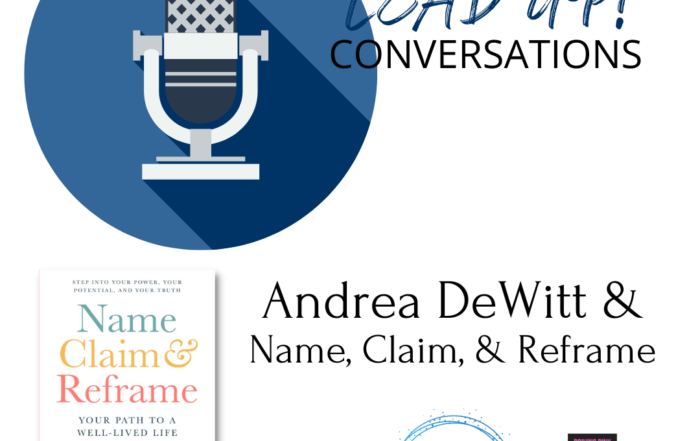Transformation in 16 Steps

Earlier this year, I mentioned my experiment with personal intention. As part of the effort, I used Lynne McTaggart’s Mental Blueprints (chapter 9 of The Intention Experiment: Using Your Thoughts to Change Your Life and the World). McTaggart describes a process of mental rehearsal, which she distinguishes as different from the more common concept of visualization. Visualization, according to McTaggart, involves mentally watching yourself, such as seeing yourself make a presentation. Mental rehearsal, in contrast, imagines the actual experience.
An elite athlete, for example, would mentally prepare by imagining herself actually skiing down a course in “real time,” beginning with the trigger for launch, the explosive response, the physical (visual, sound, feeling) sensations of both the environment (light and shadow, intense wind, hard pack and powder snow) and the actual exertion required (each muscle movement, the tightness of a crouch, the push of each ski). Potential challenges are anticipated and overcome; likewise, opportunities for excellence and conquering the course with a winning time. The “script” only ends with the completion, the looking and seeing results, the thundering cheers of the crowd and the exhilaration of the win with a new record.
Contemplating the usefulness of mental rehearsal–the creation of a mental performance blueprint integrating the requisite muscle memory, cognitive capacity building and emotional component–seems acceptably logical for athletes. Athletes have actual experience to draw upon, repetitive practice, elation from successes, and lessons from failures. What if, however, we seek to create a mental blueprint for something that has not yet occurred? There’s precedence for this intentional calling forth, for example:
- McTaggart applies the concept of “the field” and utilizes explanations tying to quantum physics.
- Rhonda Byrne describes a “Law of Attraction” in her book, The Secret
.
- The Bible portrays faith as the substance of things hoped for and the evidence of things not seen (Hebrews 11:1, KJV).
Myriad alternate examples can be found beyond these three. Whether a form of science, New Age thinking or traditional spiritual faith, for some people the idea of bringing to existence that which is not yet real often falls into what might be categorized as the “woo-woo” space. For individuals who conceptualize the world more concretely, the power of acting as if requires, well, a leap of faith. As a researcher who studies transformative experiences of business professionals, I’ve found the thoughtful dwelling upon an idea, concerted introspection and reflexive thinking often lead to personal change and transformation. Which returns us to the sixteen steps in the image tied to this post.
Each morning during my personal “intention experiment,” on my first trip down the stairs, I played a mental script. I imagined my day starting, as if I lived and worked very differently from my reality. I ticked off the tasks on my to-do list, mentally sensed the effort, energy and creativity required, experienced the results and rewards of my activity and investment. As my foot landed the sixteenth time, I felt the outcome of this other life, this other day . . . and then the script ended and I went about my actual day.
While I comfortably integrate the dual nature of science and spirituality, I’m still a bit awed by the transformation in my life. Within the window of my ninety-day experiment, opportunities occurred, and I felt uniquely prepared to think and respond differently to these than I might have just a few weeks prior. Today, less than three months from the conclusion of the experiment, I’m living that “other” life—the transition unfolded at an accelerated pace. And, although the transformation is not fully complete—I’m still tying off and trimming a few cords, as well as adapting to the changing role—my days proceed with purpose and passion.
If you could change one thing—any thing—about your life, your work, your relationships, your dreams, what would it be? For me, from potential to reality only took sixteen steps.
If you find this post valuable, please consider the following:
- Recommend or share this post with others.
- Visit the LEADistics Facebook page and share your thoughts.
- Subscribe to the blog from any page with an invitation form. We’ll respect your privacy and never spam you.
Photo © 2013 Kathryn Bingham
Thank you for visiting Dr. Kathryn Bingham’s blog! We invite your discussion at LEADistics’ community page. Fans and honest critics are welcomed! Please see our Comments Policy and reuse Permissions on the FAQ page. All posts are covered by copyright law, with all rights reserved.
Social Share
Recent Posts
LeadUP! Juana Bordas
This LeadUP! Conversation features Dr. Juana Bordas, president of Mestiza Leadership International and author of newly updated The Power of Latino Leadership (listen or watch here). Bordas shares how her immigrant experience shaped her leadership. [...]
Power of the Pivot
The idea seems simple. When something isn’t working, just change. Shift. Adapt. But our brain sabotages the effort. We’re convinced that if we just do better or try harder with our current path or process, [...]
LeadUP! Andrea DeWitt
In this LeadUP! episode, Dr. Kathryn Bingham and author Andrea DeWitt talk about her new book, Name, Claim & Reframe and how individuals can step into their power, their potential, and their truth. Both the [...]





